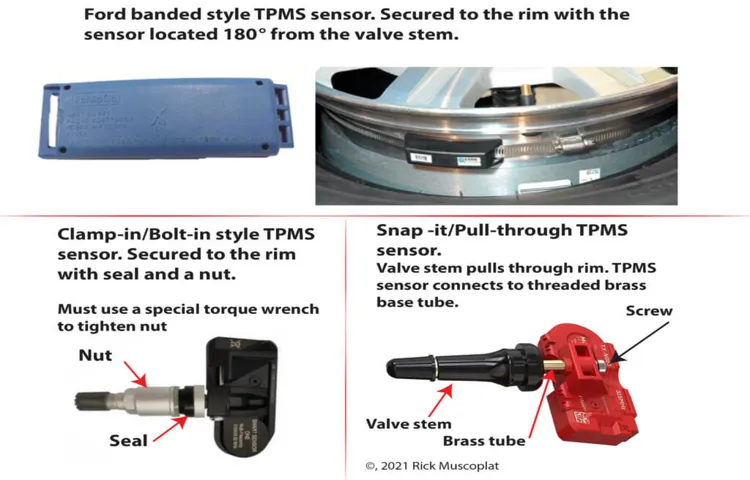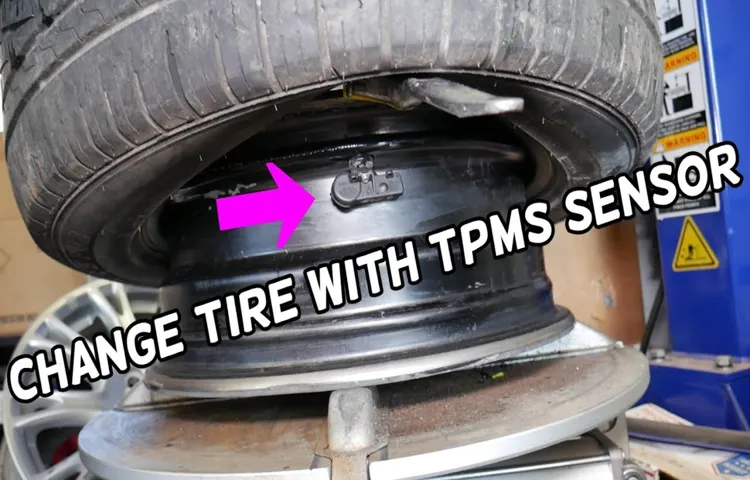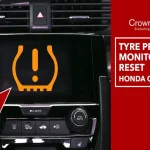Imagine driving down the road in your car and suddenly your tire pressure warning light illuminates. It’s a common experience that many drivers have faced, but do you know how your tire pressure sensors work? And what about the role of tire rotation in maintaining proper tire pressure? In this blog, we’ll explore the ins and outs of tire pressure sensors and how they work together with tire rotation to keep you safe on the road. Whether you’re a seasoned driver or a newbie on the road, this information is essential for maintaining your vehicle’s safety.
So let’s dive in and learn about these important aspects of vehicle maintenance.
Table of Contents
What are Tire Pressure Sensors?
Tire pressure sensors are devices that monitor the air levels in your tires. They are designed to alert you when your tire pressure is low, as underinflated tires can cause accidents and damage to your vehicle. When you rotate your tires, you may wonder how the sensors work and if they need to be reset.
Tire pressure sensors generally work by sending a signal from each tire to a central computer in your car. This computer then reads the pressure data and alerts you when a tire is low. As for rotating tires, most modern vehicles have sensors built into each wheel, which automatically update the computer with the new location of the tire, so there is no need to reset the sensors when you rotate your tires.
Overall, tire pressure sensors are essential for safe driving and maintaining your vehicle’s performance, and ensuring they are working correctly is crucial. So, the next time you rotate your tires, rest assured that your tire pressure sensors are monitoring the air levels in each tire, ensuring optimal performance and safety on the road.
Function of Tire Pressure Sensors
Tire pressure sensors are small devices that are installed in each of your car’s tires to monitor their pressure levels. These sensors essentially function as a safety feature, helping drivers maintain optimal tire pressure levels which can improve vehicle handling and traction, and also increase fuel efficiency. If the tire pressure drops below a certain level, the sensor will communicate this information to your vehicle’s onboard computer, which alerts you with a warning light on the dashboard.
Maintaining proper tire pressure also prolongs the life of your tires, while a low tire pressure level can lead to tire damage and decreased performance. With tire pressure sensors, you can ensure that your car is operating at its best and keep you and your passengers safe on the road.

Types of Tire Pressure Sensors
Tire pressure sensors are a vital component of modern vehicles that monitor the air pressure in your tires and alert you when it drops below a safe level. There are two types of tire pressure sensors: direct and indirect. Direct tire pressure sensors use a pressure sensor mounted inside the tire to measure the air pressure.
They provide real-time data and are more precise than the indirect type. Indirect tire pressure sensors, on the other hand, use the Anti-lock Braking System (ABS) wheel speed sensors to monitor the tire pressure. They rely on the assumption that a deflated tire has a slightly smaller circumference than an inflated tire, which results in a lower rotation speed.
However, they are less accurate than the direct type and can sometimes give false readings. Regardless of the type, tire pressure sensors are essential for maintaining your vehicle’s safety and performance on the road. So, it’s important to regularly check your tire pressure and ensure that your sensors are functioning correctly.
Tire Rotation: Why it is Necessary?
Tire pressure sensors are designed to monitor and alert drivers when tire pressure falls below recommended levels. However, when you decide to rotate your tires, you may be wondering how these sensors work. Well, when sensors are first installed, they are programmed to detect the specific position of each tire.
When tires are rotated, the position of each tire changes, and the sensor may register a false reading. In most cases, a qualified technician can reprogram the sensors to ensure they function properly. But why is tire rotation necessary in the first place? Regular tire rotation helps to evenly distribute wear and tear, ensuring that your tires last longer and perform better.
By rotating your tires, you can also improve handling and maintain better traction – essential for safe driving. So, if you are unsure about how the tire pressure sensors work when you rotate your tires, don’t worry, just book a tire rotation with a qualified technician to ensure your sensors continue to function as they should.
Benefits of Tire Rotation
Tire Rotation Tire rotation is a crucial part of routine maintenance for your car’s tires. By regularly rotating your tires, you can ensure that they wear evenly, which helps prolong their lifespan. It also improves your vehicle’s overall performance and handling on the road.
Rotating the tires means changing their position from one wheel to another, so every tire gets some time at each position. This practice helps prevent uneven wear on the tires, which can lead to poor handling and even blowouts. Different types of vehicles require different rotation schedules based on the drivetrain and tire design.
It’s always best to consult with your mechanic or vehicle’s manual to determine your vehicle’s specific needs. In general, however, rotating your tires every 5,000 to 7,500 miles is a good rule of thumb to follow. So, the next time you take your car in for maintenance, make sure you ask your mechanic to include tire rotation in their checklist!
When to Rotate Your Tires?
Tire rotation is an essential process that prolongs the life of your tires and ensures their optimal performance. Typically, tire rotation should be done every 6,000 to 8,000 miles, but it may vary depending on your driving habits and the type of vehicle you own. Failure to rotate your tires frequently may cause uneven wear and tear, leading to premature wear, decreased traction on the road, and reduced fuel economy.
Proper tire rotation involves switching your tires’ positions to balance the tire wear evenly across all four tires and prevent one or two from wearing out faster than the others. A routine tire rotation will not only extend the life of your tires but also enhance your vehicle’s handling, safety, steering, and ride comfort. Therefore, it is essential to consult your vehicle owner manual or visit a certified technician to perform regular tire rotation and maintenance to keep your vehicle safe and roadworthy.
Effect of Tire Rotation on Tire Pressure Sensors
Tire pressure sensors are designed to measure the air pressure within tires and alert drivers if the pressure drops below the recommended level. However, when you rotate your tires, the tire pressure sensors may need to be reset as they could be attached to different wheels. In some vehicles, this reset may be done automatically, while others may need to be manually reset by using a specialized tool or visiting a professional mechanic.
It’s important to note that failing to reset the sensors after rotating the tires could result in false readings, leading to both safety hazards and increased wear on your tires. Therefore, it’s crucial to ensure that your tire pressure sensors are properly calibrated each time you rotate your tires. By doing so, you’ll be able to maintain the recommended tire pressure levels and maximize the lifespan of your tires.
How Tire Rotation Affects Tire Pressure Sensors
Tire rotation plays an important role in the maintenance of our vehicles, but it can also have an impact on tire pressure sensors. When tires are rotated, the position of each tire on the vehicle changes. This can cause the tire pressure readings to be inaccurate, as the sensors are calibrated to specific tire positions.
For example, if the front left tire is moved to the rear right position, the sensor may still read it as the front left tire and show an incorrect pressure reading. This is because the sensors rely on the radio frequency signals to communicate tire pressure data to the vehicle’s computer. Inaccurate readings could potentially lead to low tire pressure and even tire damage, so it’s important to recalibrate the sensors after tire rotation.
The recalibration process involves resetting the sensors to recognize the new tire positions, and this can be done easily by a professional technician. Proper attention to the tire pressure sensors can ensure a smoother, safer driving experience and avoid costly repairs.
Resetting Tire Pressure Sensors After Tire Rotation
Tire rotation is a necessary maintenance task to ensure the longevity of your tires and even wear. However, many people are unaware of the impact it can have on the tire pressure sensors in their vehicles. When tires are rotated, the sensors may become confused and provide inaccurate readings.
This can lead to unnecessary and potentially dangerous situations if not addressed. To reset your tire pressure sensors after a tire rotation, you will need to follow your vehicle’s specific instructions. This may involve running a recalibration process or inputting the new tire positions into the sensor system.
It’s essential to address any sensor issues promptly to maintain accurate readings and ensure your safety on the road. Don’t overlook this crucial step in your tire maintenance routine. By taking the time to reset the sensors after rotation, you can have peace of mind knowing your tire pressure readings are accurate and reliable.
Conclusion
At the end of the day, it all boils down to communication – tire pressure sensors work by communicating with your car’s computer system to accurately measure the pressure in each tire. When you rotate your tires, these sensors intelligently adjust to the new position, ensuring that your vehicle stays safe and performs at its best. It’s like having a group of tiny telepaths constantly checking on the health of your tires, and that’s a pretty impressive feat if you ask me.
“
FAQs
What are tire pressure sensors and how do they work?
Tire pressure sensors are devices that are built into tires to monitor their inflation levels. They work by using a sensor to measure the air pressure inside the tire and sending the information wirelessly to the car’s computer.
Can tire pressure sensors malfunction?
Yes, tire pressure sensors can malfunction for various reasons such as low battery, sensor damage, or programming errors. It is important to have them checked regularly for accuracy.
How can I tell if my tire pressure sensors need to be replaced?
If your tire pressure monitoring system light is on, it could be an indication that your sensors need to be replaced. You can also test them manually with a tire gauge to compare the readings.
What happens if I do not replace my tire pressure sensors?
If you do not replace your tire pressure sensors, the monitoring system will not function correctly, and you will not be alerted to low tire pressure. This can lead to poor handling, decreased fuel efficiency, and increased tire wear.
Do I need to recalibrate my tire pressure sensors after rotating my tires?
Yes, it is recommended to have your tire pressure sensors recalibrated after a tire rotation to ensure accurate readings. This can be done through a computerized reprogramming process.
Can tire pressure sensors be repaired?
In some cases, tire pressure sensors can be repaired rather than replaced. This may involve replacing the battery or fixing a damaged sensor. It is important to consult with a professional mechanic for proper diagnosis and repair.
Why are tire pressure sensors important?
Tire pressure sensors are important for safety and efficiency. Properly inflated tires can improve handling, braking, and fuel efficiency, while underinflated or overinflated tires can increase the risk of accidents and decrease the lifespan of the tires.



